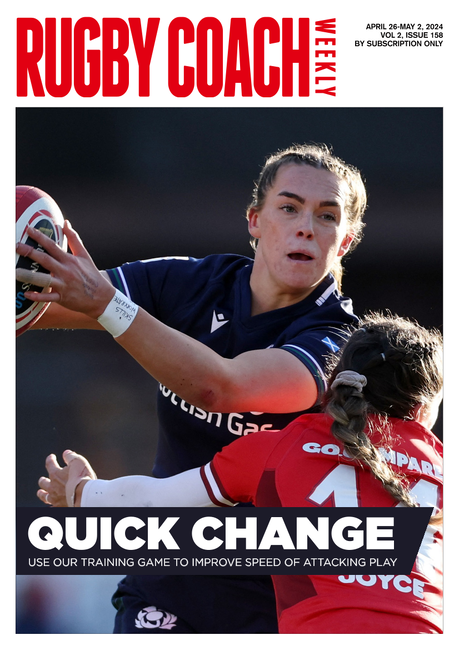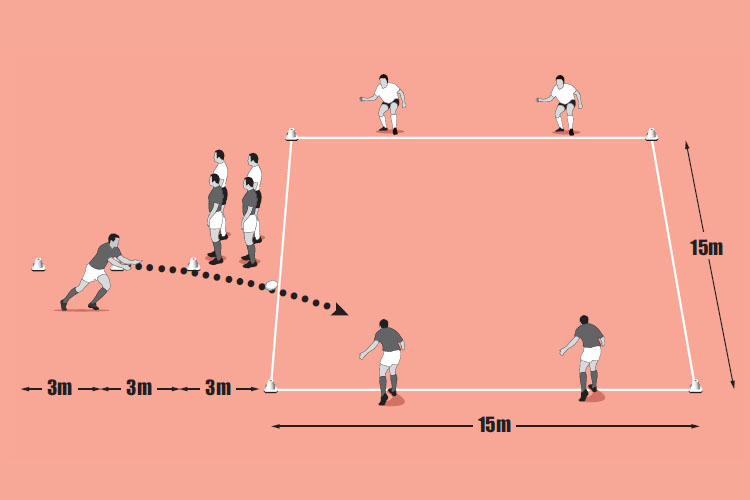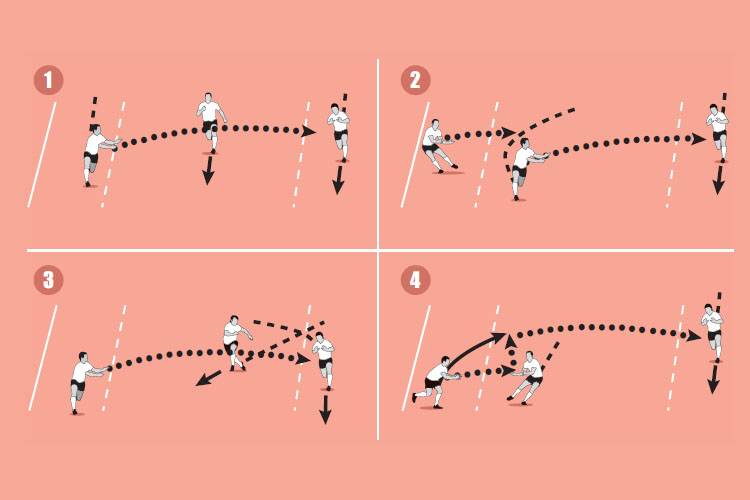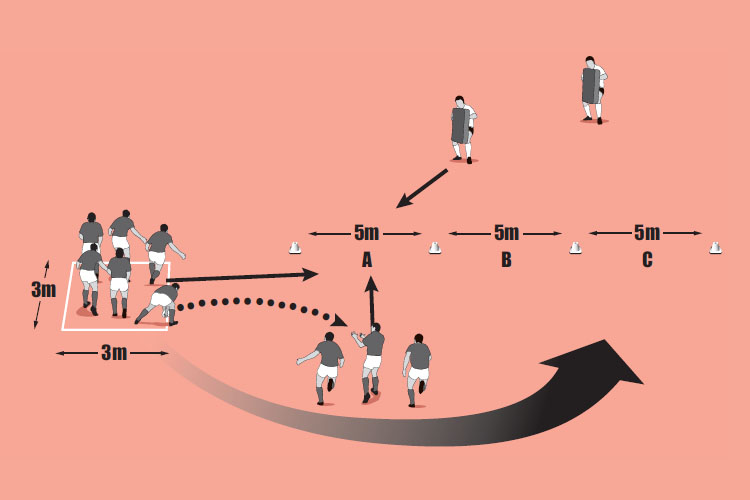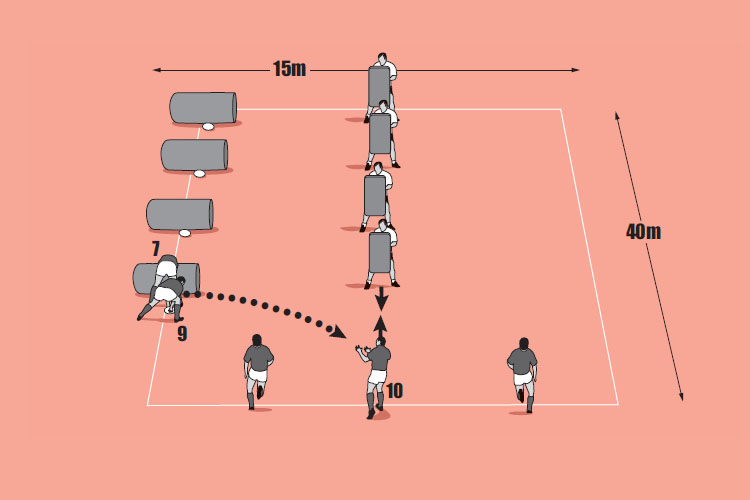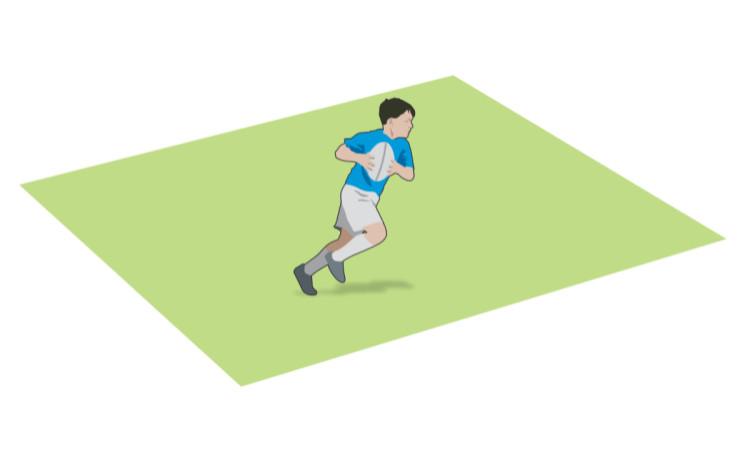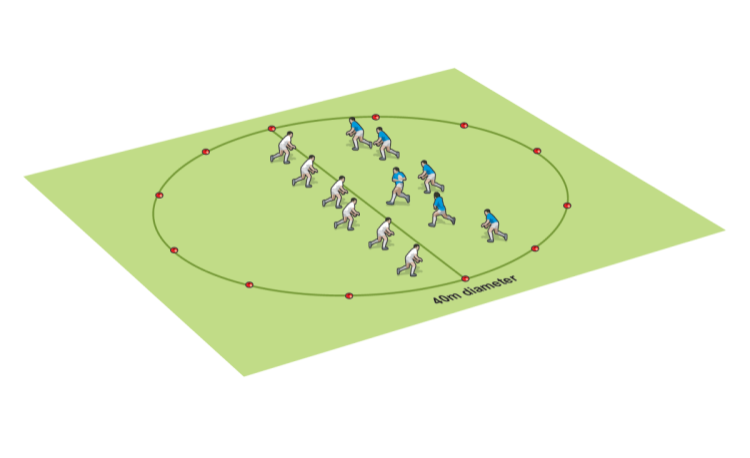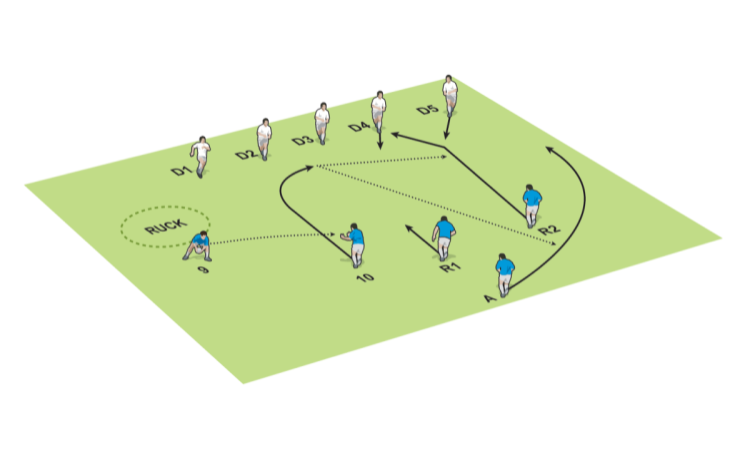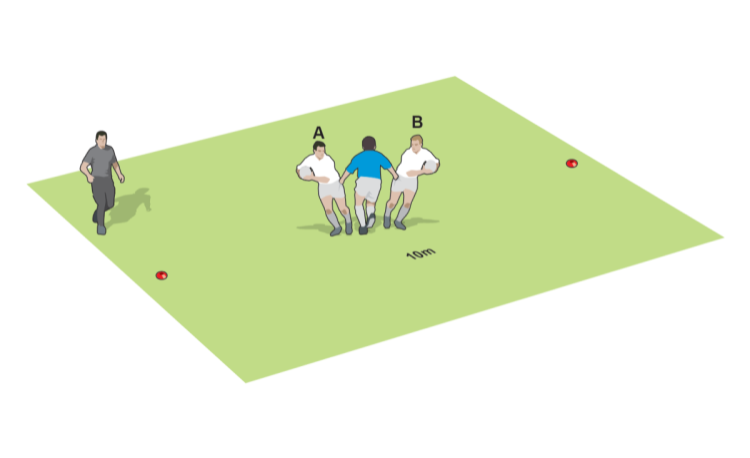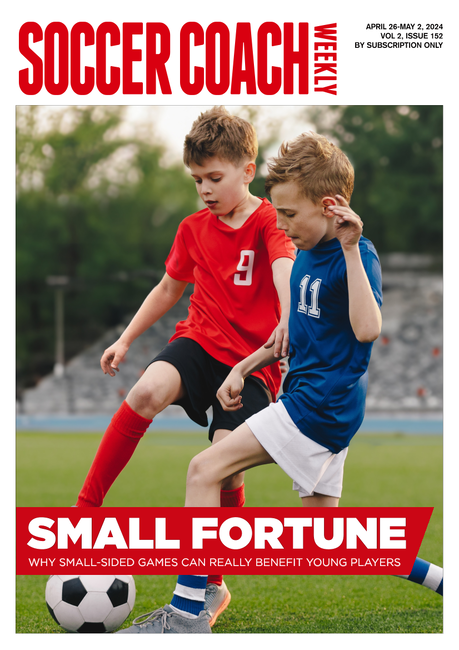You are viewing
1 of your 2 free articles
Collective movement
Simple patterns of play from breakdowns can create overlaps. Here is a pattern where the players behind the breakdown situation move to one side of the breakdown, leading to an overload. It works on running and handling skills with a real “in-game” feel to the outcomes.
Warm up time: 7-10
Session time: 5-10
Development time: 10-15
Game time: 10-15
Warm down time: 7-10
What to think about
Are the players drifting across too much and being pushed towards touch? Because the receiver’s angle is moving away from the point of the pass they may naturally drift. However ask one of the wider players to straighten up his line of running and this will help the whole attack straighten. Are the players running onto the pass or taking it statically? Use starting cones in various positions for each player and experiment with what is the best alignment to generate pace onto the ball.set-up
- Decide which side to attack by looking at what side is least defended and what space there is.
- Decide if the players moving across are going to be the first receivers or late runners.
- If you are not sliding across from the far side try to straighten up and fix any opponents.
What you get your players to do
Split your players into groups of four attackers. Mark out with cones, ruck pads or poles a scrum or ruck. Put a clearing passer behind this set up. Mark out a flat defensive formation of four static defenders (using poles or cones), two on each side of the breakdown. Position two attackers on each side of the “ruck”. On your signal they all move right or left, with the two players moving from one side of the breakdown to join their team mates as they collectively move and attack the two static defenders (poles).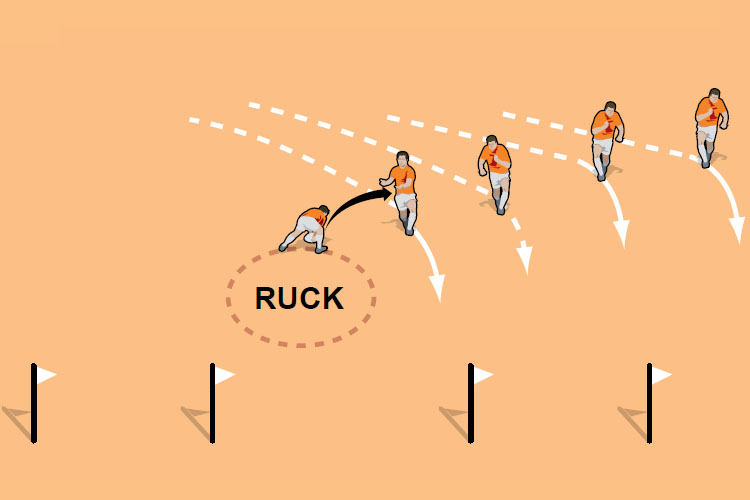
Development
- Vary who receives the first pass and which players then become the support.
- Use some out then in passes to beat the defence.
- Use live defenders.
- Add in more players and the team can use decoy runs to fool the defence.
Related Files
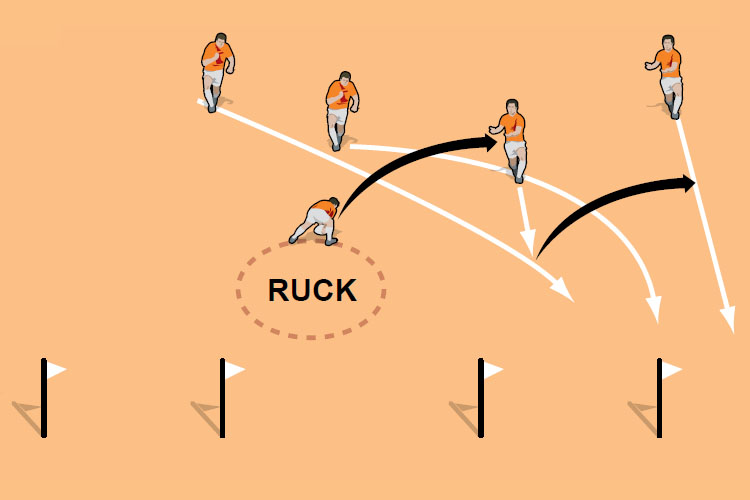
Game situation
Split into two teams of eight. Start with touch rugby before developing it into contact. From every re-start and breakdown the attacking team must collectively move and attack one side of the pitch in numbers. This will develop the player’s ability to work together and create overlaps. In the early stages it is wise to help the players organise themselves by you deciding on the timing of the delivery from each tackle situation. Once the players get used to it, let them decide how to proceed.
What to call out
- “Move together as a group”
- “Pass the ball in front of the receiver”
- “Run onto the pass and fix a defender”
- “Change your angle of run to straighten the line”
Newsletter Sign Up
Coaches Testimonials

Gerald Kearney, Downtown Las Vegas Soccer Club

Paul Butler, Florida, USA

Rick Shields, Springboro, USA

Tony Green, Pierrefonds Titans, Quebec, Canada
Subscribe Today
Be a more effective, more successful rugby coach
In a recent survey 89% of subscribers said Rugby Coach Weekly makes them more confident, 91% said Rugby Coach Weekly makes them a more effective coach and 93% said Rugby Coach Weekly makes them more inspired.
Get Weekly Inspiration
All the latest techniques and approaches
Rugby Coach Weekly offers proven and easy to use rugby drills, coaching sessions, practice plans, small-sided games, warm-ups, training tips and advice.
We've been at the cutting edge of rugby coaching since we launched in 2005, creating resources for the grassroots youth coach, following best practice from around the world and insights from the professional game.


